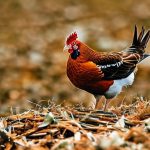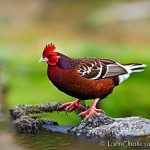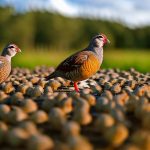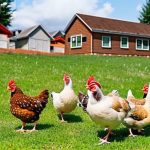Moisture plays a crucial role in egg development, particularly in eggshell formation and embryo growth. The eggshell, primarily composed of calcium carbonate, protects the developing embryo while allowing gas exchange. Adequate moisture content is vital for proper embryo development, as insufficient moisture can lead to deformities or embryonic death.
The moisture within the egg provides a cushioning environment and protects the embryo from external pressures. Additionally, moisture is essential for temperature regulation within the egg. Maintaining a consistent temperature is crucial for proper embryo development, and moisture helps insulate the egg and regulate its internal temperature, keeping it within the optimal range.
The importance of moisture extends to various aspects of egg development, including:
1. Eggshell formation
2. Embryo growth and protection
3.
Temperature regulation
4. Gas exchange
5. Cushioning the developing embryo
In summary, moisture is a critical factor in successful egg development, playing a vital role in protecting and nurturing the growing embryo throughout its developmental stages.
Table of Contents
Key Takeaways
- Moisture is crucial for the development of eggs, as it helps maintain the right environment for the embryo to grow.
- Chickens maintain egg moisture by secreting a protective coating on the eggs and adjusting their body temperature and humidity levels.
- Broody hens play a vital role in regulating egg moisture by sitting on the eggs and controlling the temperature and humidity around them.
- Environmental factors such as temperature, humidity, and ventilation can affect egg moisture levels and should be carefully managed.
- Eggshell permeability is important for allowing gases to exchange while preventing excessive moisture loss from the egg.
- Chickens protect eggs from drying out by covering them with a protective coating and by adjusting their nesting behavior to shield them from environmental factors.
- To ensure optimal egg moisture levels, it’s important to provide a clean and comfortable nesting environment, monitor environmental conditions, and handle eggs with care to prevent damage to the protective coating.
How Chickens Maintain Egg Moisture
Protective Coating: The First Line of Defense
One way they do this is by secreting a protective coating called bloom or cuticle onto the surface of the eggshell. This coating helps to seal the pores on the eggshell, preventing excessive moisture loss and protecting the developing embryo from harmful bacteria.
Additional Moisture and Egg Turning
Additionally, chickens have specialized glands near their vent that secrete a thin layer of moisture onto the eggshell as it is laid. This extra layer of moisture helps to maintain the necessary humidity levels within the egg and provides an additional protective barrier. Furthermore, chickens are known to turn their eggs regularly while nesting. This behavior helps to distribute the moisture evenly throughout the egg, ensuring that all parts of the developing embryo receive adequate hydration.
Multiple Strategies for Optimal Moisture Levels
Overall, chickens have developed several strategies to maintain optimal moisture levels in their eggs, including secreting a protective coating, adding extra moisture during laying, and turning their eggs regularly to ensure even distribution of moisture. These mechanisms work together to provide a safe and healthy environment for the developing embryo to grow and thrive.
The Role of the Broody Hen in Egg Moisture Regulation
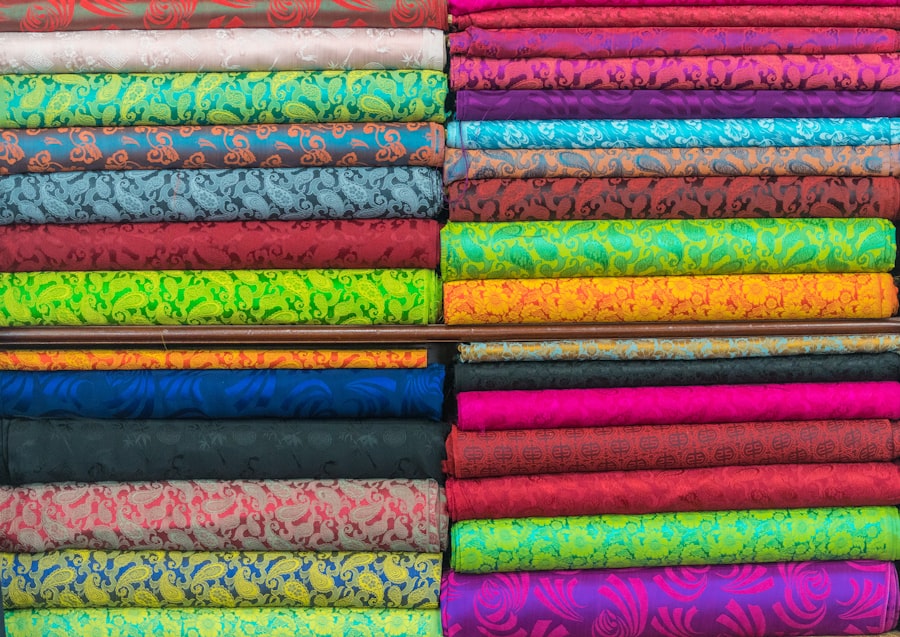
Broody hens play a crucial role in regulating egg moisture levels during incubation. When a hen becomes broody, she will sit on her eggs for extended periods, providing warmth and humidity through her body heat and moist breath. This warmth and humidity help to maintain optimal conditions for embryo development within the eggs.
Additionally, broody hens will often turn their eggs regularly while nesting, ensuring that all parts of the developing embryos receive adequate hydration. Furthermore, broody hens will often adjust their position on the nest to regulate temperature and humidity levels within their eggs. They may spread their wings to allow more air circulation or fluff up their feathers to trap more heat and humidity as needed.
This behavior helps to ensure that the eggs remain within the optimal temperature and humidity range for successful incubation. In summary, broody hens play a vital role in regulating egg moisture levels during incubation by providing warmth and humidity through their body heat and moist breath, turning their eggs regularly, and adjusting their position on the nest as needed. Broody hens play a crucial role in regulating egg moisture levels during incubation.
When a hen becomes broody, she will sit on her eggs for extended periods, providing warmth and humidity through her body heat and moist breath. This warmth and humidity help to maintain optimal conditions for embryo development within the eggs. Additionally, broody hens will often turn their eggs regularly while nesting, ensuring that all parts of the developing embryos receive adequate hydration.
Furthermore, broody hens will often adjust their position on the nest to regulate temperature and humidity levels within their eggs. They may spread their wings to allow more air circulation or fluff up their feathers to trap more heat and humidity as needed. This behavior helps to ensure that the eggs remain within the optimal temperature and humidity range for successful incubation.
Environmental Factors Affecting Egg Moisture
Several environmental factors can affect egg moisture levels during incubation. One such factor is relative humidity, which refers to the amount of water vapor present in the air compared to the maximum amount that could be present at that temperature. High relative humidity can lead to excessive moisture loss from eggs, while low relative humidity can result in inadequate moisture levels for proper embryo development.
It is essential to monitor and regulate relative humidity levels during incubation to ensure optimal egg moisture. Additionally, temperature can also impact egg moisture levels. High temperatures can lead to increased evaporation from eggs, resulting in excessive moisture loss and potential harm to developing embryos.
On the other hand, low temperatures can slow down evaporation and lead to inadequate moisture levels within the eggs. It is crucial to maintain consistent and appropriate temperatures during incubation to prevent fluctuations in egg moisture levels. Furthermore, ventilation plays a significant role in regulating egg moisture levels.
Proper ventilation is essential for maintaining optimal humidity levels within an incubator or nesting area. Inadequate ventilation can lead to high humidity levels and excessive moisture loss from eggs, while excessive ventilation can result in low humidity levels and inadequate moisture for proper embryo development. It is essential to ensure proper ventilation to maintain optimal egg moisture levels during incubation.
Several environmental factors can affect egg moisture levels during incubation. One such factor is relative humidity, which refers to the amount of water vapor present in the air compared to the maximum amount that could be present at that temperature. High relative humidity can lead to excessive moisture loss from eggs, while low relative humidity can result in inadequate moisture levels for proper embryo development.
It is essential to monitor and regulate relative humidity levels during incubation to ensure optimal egg moisture. Additionally, temperature can also impact egg moisture levels. High temperatures can lead to increased evaporation from eggs, resulting in excessive moisture loss and potential harm to developing embryos.
On the other hand, low temperatures can slow down evaporation and lead to inadequate moisture levels within the eggs. It is crucial to maintain consistent and appropriate temperatures during incubation to prevent fluctuations in egg moisture levels. Furthermore, ventilation plays a significant role in regulating egg moisture levels.
Proper ventilation is essential for maintaining optimal humidity levels within an incubator or nesting area. Inadequate ventilation can lead to high humidity levels and excessive moisture loss from eggs, while excessive ventilation can result in low humidity levels and inadequate moisture for proper embryo development. It is essential to ensure proper ventilation to maintain optimal egg moisture levels during incubation.
The Significance of Eggshell Permeability
Eggshell permeability refers to how easily gases and water vapor can pass through the eggshell. The permeability of an eggshell is crucial for gas exchange and maintaining optimal moisture levels within the egg during incubation. A balance between allowing enough gas exchange for proper embryo development while preventing excessive moisture loss is essential for successful incubation.
The permeability of an eggshell can be influenced by various factors such as shell thickness, pore size, and cuticle quality. A thinner shell with larger pores may allow for increased gas exchange but could also result in higher rates of moisture loss from eggs. Conversely, a thicker shell with smaller pores may provide better protection against excessive moisture loss but could hinder gas exchange necessary for embryo development.
Additionally, the quality of the cuticle on the eggshell can also impact permeability. A well-developed cuticle can help seal pores on the eggshell, preventing excessive moisture loss while still allowing for necessary gas exchange. Overall, eggshell permeability plays a significant role in maintaining optimal gas exchange and moisture levels within eggs during incubation.
Eggshell permeability refers to how easily gases and water vapor can pass through the eggshell. The permeability of an eggshell is crucial for gas exchange and maintaining optimal moisture levels within the egg during incubation. A balance between allowing enough gas exchange for proper embryo development while preventing excessive moisture loss is essential for successful incubation.
The permeability of an eggshell can be influenced by various factors such as shell thickness, pore size, and cuticle quality. A thinner shell with larger pores may allow for increased gas exchange but could also result in higher rates of moisture loss from eggs. Conversely, a thicker shell with smaller pores may provide better protection against excessive moisture loss but could hinder gas exchange necessary for embryo development.
Additionally, the quality of the cuticle on the eggshell can also impact permeability. A well-developed cuticle can help seal pores on the eggshell, preventing excessive moisture loss while still allowing for necessary gas exchange. Overall, eggshell permeability plays a significant role in maintaining optimal gas exchange and moisture levels within eggs during incubation.
How Chickens Protect Eggs from Drying Out

Nest Building Behavior
One such strategy is nest building behavior, where hens will create a nest using materials such as straw or hay to provide insulation and protection for their eggs. This nest building behavior helps to regulate temperature and humidity levels around the eggs, preventing excessive drying out.
Incubation and Moisture Provision
Additionally, chickens will often sit on their eggs during incubation, providing warmth and humidity through their body heat and moist breath. This behavior helps to maintain optimal conditions for embryo development within the eggs and prevents them from drying out.
Egg Turning and Redistribution of Moisture
Furthermore, chickens will turn their eggs regularly while nesting to ensure even distribution of moisture throughout each egg. This turning behavior helps prevent excessive drying out in specific areas of an egg by redistributing its internal contents regularly. Overall, chickens have developed several strategies such as nest building behavior, sitting on their eggs for warmth and humidity provision through body heat and moist breath, as well as turning their eggs regularly while nesting to protect their eggs from drying out during incubation.
Tips for Ensuring Optimal Egg Moisture Levels
To ensure optimal egg moisture levels during incubation or nesting period: 1) Monitor relative humidity: Use a hygrometer to monitor relative humidity levels regularly and make adjustments as needed to maintain optimal conditions for embryo development.
2) Regulate temperature: Maintain consistent and appropriate temperatures within an incubator or nesting area to prevent fluctuations in egg moisture levels.
3) Provide proper ventilation: Ensure adequate ventilation within an incubator or nesting area to maintain optimal humidity levels without excessive moisture loss.
4) Use high-quality nesting materials: Provide hens with high-quality nesting materials such as straw or hay to create a well-insulated nest that regulates temperature and humidity around their eggs.
5) Turn eggs regularly: If not using a broody hen for incubation, turn eggs regularly to ensure even distribution of moisture throughout each egg.
6) Protect against external factors: Shield eggs from direct sunlight or extreme weather conditions that could lead to excessive drying out.
7) Check for signs of dehydration: Monitor eggs for signs of dehydration such as shrinkage or changes in shell texture and make adjustments as needed. By following these tips, you can help ensure optimal egg moisture levels during incubation or nesting period, promoting successful embryo development and hatching. To ensure optimal egg moisture levels during incubation or nesting period: 1) Monitor relative humidity: Use a hygrometer to monitor relative humidity levels regularly and make adjustments as needed to maintain optimal conditions for embryo development.
2) Regulate temperature: Maintain consistent and appropriate temperatures within an incubator or nesting area to prevent fluctuations in egg moisture levels.
3) Provide proper ventilation: Ensure adequate ventilation within an incubator or nesting area to maintain optimal humidity levels without excessive moisture loss.
4) Use high-quality nesting materials: Provide hens with high-quality nesting materials such as straw or hay to create a well-insulated nest that regulates temperature and humidity around their eggs.
5) Turn eggs regularly: If not using a broody hen for incubation, turn eggs regularly to ensure even distribution of moisture throughout each egg.
6) Protect against external factors: Shield eggs from direct sunlight or extreme weather conditions that could lead to excessive drying out.
7) Check for signs of dehydration: Monitor eggs for signs of dehydration such as shrinkage or
If you’re interested in learning more about how to keep chickens healthy and happy, you might want to check out this article on chicken coop design in Grand Island, NE. It provides valuable information on creating a comfortable and safe environment for your chickens, which is essential for ensuring they can keep their eggs moist and healthy.
FAQs
What is the purpose of keeping eggs moist?
Chickens keep their eggs moist to prevent the eggs from drying out, which can lead to decreased hatchability and potential embryo development issues.
How do chickens keep their eggs moist?
Chickens keep their eggs moist by periodically turning and rotating them with their beaks while they are sitting on the nest. This helps to evenly distribute the moisture within the egg and prevent it from drying out.
Why is it important for eggs to remain moist?
It is important for eggs to remain moist because the moisture helps to maintain the proper environment for embryo development. If the eggs dry out, the embryo may not develop properly or may not hatch at all.
What are the risks of eggs drying out?
If eggs dry out, there is a risk of decreased hatchability, as well as potential developmental issues for the embryos inside the eggs. This can result in lower overall hatch rates and potential loss of viable chicks.
Meet Walter, the feathered-friend fanatic of Florida! Nestled in the sunshine state, Walter struts through life with his feathered companions, clucking his way to happiness. With a coop that’s fancier than a five-star hotel, he’s the Don Juan of the chicken world. When he’s not teaching his hens to do the cha-cha, you’ll find him in a heated debate with his prized rooster, Sir Clucks-a-Lot. Walter’s poultry passion is no yolk; he’s the sunny-side-up guy you never knew you needed in your flock of friends!


